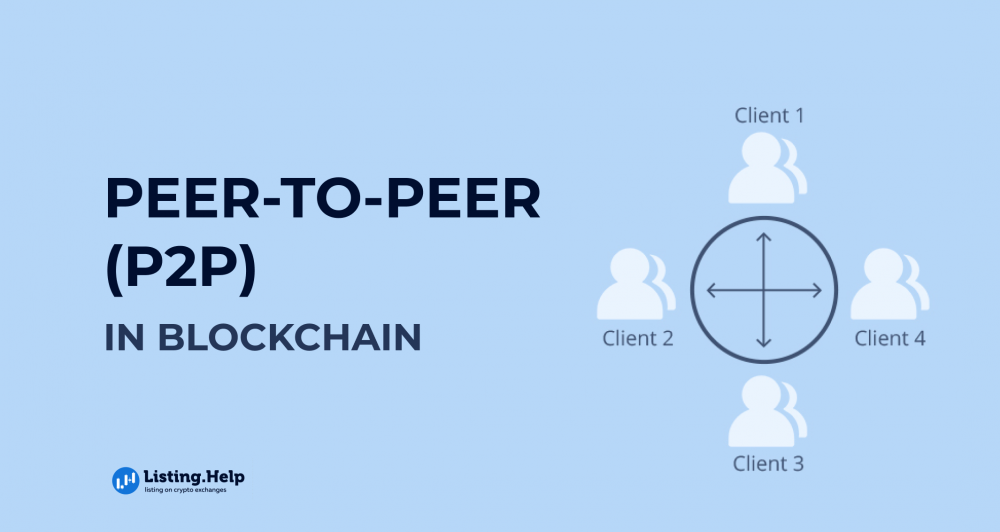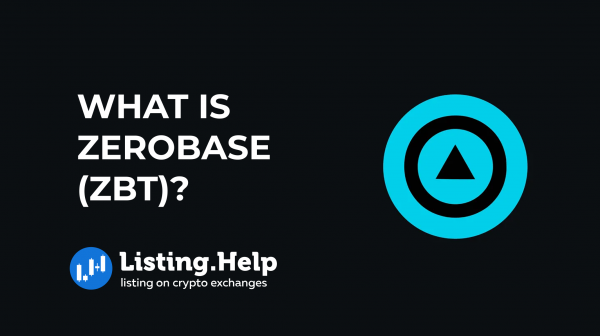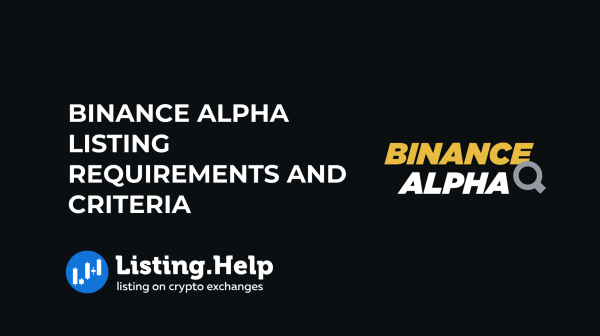What is Peer-to-Peer (P2P) in Blockchain?
 March 26, 2024
March 26, 2024 Updated: January 27 2025, 07:17
Updated: January 27 2025, 07:17
LEAVE A REQUEST
Launching your own token project? Our experts are ready to help with listing on exchanges, market making, marketing and other solutions
SUBMIT APPLICATIONIn the realm of computer science, a peer-to-peer (P2P) network is a system where interconnected devices share and store files together. Each participant, or node, in this network operates as an independent peer, with generally equal capabilities and responsibilities.
Peer-to-peer often describes the process of exchanging digital currencies or assets over a decentralized network. This P2P framework enables direct transactions between buyers and sellers without intermediaries. Additionally, some websites offer P2P platforms that facilitate direct lending and borrowing between individuals.
The P2P model is versatile, gaining significant traction in the 1990s with the advent of early file-sharing applications. Nowadays, these networks are fundamental to the operation of most digital currencies, forming a substantial part of the blockchain sector. Beyond cryptocurrencies, P2P architectures are utilized in various other distributed computing contexts, such as search engines, media streaming services, online marketplaces, and the InterPlanetary File System (IPFS) protocol.
How does P2P work?
At its core, a P2P network operates through a decentralized assembly of user nodes. These networks are distinct because they lack a central governing authority or server, with each participant maintaining a segment of the network’s data. This dual-role functionality allows nodes to serve and receive content simultaneously, setting P2P networks apart from conventional client-server models where clients primarily download from a centralized source.
In a P2P setup, devices exchange files stored on their local drives, utilizing specialized software that facilitates the discovery and transfer of data across the network. When a user retrieves a file, their system becomes an additional distribution point for that content.
This means that while a node is receiving data, it functions as a client, and while distributing data, it operates as a server. Often, nodes will perform both roles concurrently, for example, downloading one file while uploading another.
The efficiency and speed of P2P networks typically improve as more users join and share resources. Furthermore, the decentralized nature of these networks enhances their resilience against cyber threats, as they lack a centralized vulnerability point.
P2P networks can be categorized based on their structural design: unstructured, structured, and hybrid, each offering different advantages and operational mechanisms.
Distributed or Decentralized?
While P2P architecture is fundamentally distributed, it’s crucial to understand that not every P2P network is fully decentralized. There are various levels of decentralization within these networks.
Some P2P systems, despite their distributed nature, still depend on a central entity to coordinate network activities, introducing a level of centralization. For example, certain file-sharing platforms in the P2P realm allow users to exchange files but do not permit them to engage in other core activities, such as overseeing search operations.
Moreover, smaller networks, especially those governed by a group of users with common objectives, might exhibit more centralization, even in the absence of a centralized network structure.
P2P Network Varieties
Unstructured P2P networks lack a specific arrangement in how nodes interact, allowing for spontaneous connections between participants. These networks are notably resilient to frequent changes in node participation, with nodes regularly entering and exiting.
Building these networks is relatively straightforward, but they can be resource-intensive. When searching for content, queries are broadcast to as many peers as possible, which can overwhelm the network, particularly if only a few nodes host the sought-after content.
Structured P2P networks, on the other hand, have an orderly structure that streamlines the search process, even for less common files. This efficiency often stems from utilizing hash functions to expedite data retrieval.
However, structured networks may exhibit a degree of centralization and usually demand more resources for setup and upkeep. They might also struggle with stability in environments with frequent node turnover.
Hybrid P2P networks meld elements of the traditional client-server model with peer-to-peer principles. Typically, they might include a central server to assist in peer coordination.
Hybrid networks often outperform pure unstructured or structured types by integrating the strengths of both, balancing efficiency and decentralization effectively.
The Role of P2P in Crypto
When Bitcoin first emerged, its creator, Satoshi Nakamoto, envisioned it as a “Peer-to-Peer Electronic Cash System.” This digital currency was designed to enable direct transactions between users via a P2P network, which oversees a shared ledger known as the blockchain.
The peer-to-peer structure foundational to blockchain technology enables the global transfer of bitcoin and other digital currencies without the need for middlemen or a centralized server. Additionally, anyone interested in contributing to the verification and validation of transactions can establish a Bitcoin node.
Within the Bitcoin ecosystem, there are no traditional financial institutions to process or log transactions. The blockchain serves as a public ledger, recording all network activities transparently. Essentially, each node retains a blockchain copy, cross-referencing with others to verify data accuracy and swiftly isolating and discarding any false or harmful activity.
Regarding the various roles within cryptocurrency blockchains, nodes have different functions. For instance, full nodes enhance network security by checking transactions against the system’s agreed-upon rules.
These full nodes keep an up-to-date blockchain copy, playing a crucial role in affirming the ledger’s authenticity. However, it’s important to distinguish that not all nodes engaged in this verification process are involved in mining activities.
Advantages of P2P
1. Enhanced Security:
P2P networks provide a more secure environment compared to traditional client-server models. The decentralized distribution of nodes makes blockchains highly resilient to Denial-of-Service (DoS) attacks. Furthermore, the requirement for consensus among nodes before recording new data ensures that altering blockchain information is nearly impossible, particularly in larger networks like Bitcoin’s.
2. Resistance to Censorship:
The decentralized nature of blockchain’s P2P architecture ensures that cryptocurrency wallets are beyond the reach of centralized authorities. This aspect prevents government or corporate entities from freezing or seizing assets, offering a significant level of censorship resistance. This feature has led to the adoption of cryptocurrencies as a payment method by those wishing to avoid third-party control.
Disadvantages of P2P
1. Computational Demands and Scalability:
Updating distributed ledgers across all nodes requires substantial computational power, impacting efficiency and posing challenges for scalability. Despite the increased security, this limitation hinders widespread adoption. Developers are exploring solutions like the Lightning Network, Ethereum Plasma, and the Mimblewimble protocol to overcome these hurdles.
2. Vulnerabilities During Hard Forks:
While hard forks are a natural part of blockchain evolution, they can introduce security risks if not managed properly. The creation of parallel networks during forks can lead to replay attacks if appropriate safeguards are not in place.
3. Regulatory and Control Challenges:
The decentralized and unregulated nature of P2P networks makes them difficult to govern. This has led to instances where P2P technology has been associated with illegal activities and copyright infringements, highlighting the challenges of maintaining oversight in a decentralized environment.
Conclusion
The versatility and robustness of peer-to-peer architecture are undeniable, serving as the backbone of blockchain technology that underpins cryptocurrencies. By dispersing transaction ledgers across expansive node networks, P2P systems not only bolster security but also champion the principles of decentralization and resistance to censorship, core tenets that make cryptocurrencies stand out.
Beyond the realm of blockchain and cryptocurrencies, the applications of P2P architecture are broad and varied, extending to various sectors of distributed computing. From facilitating file sharing on a global scale to enabling innovative platforms for energy trading, P2P systems demonstrate their adaptability and potential to revolutionize how we interact with technology, emphasizing collaboration and distributed power.

For deeper insights into blockchain technology, check out our Listing.Help Blog.







 December 8, 2025
December 8, 2025 








